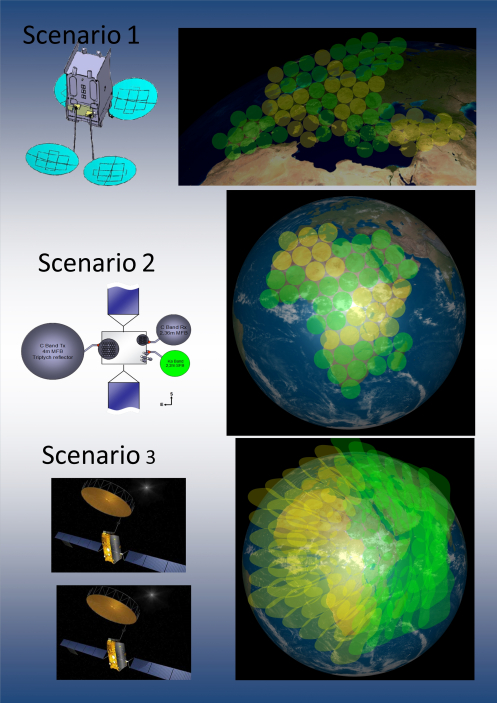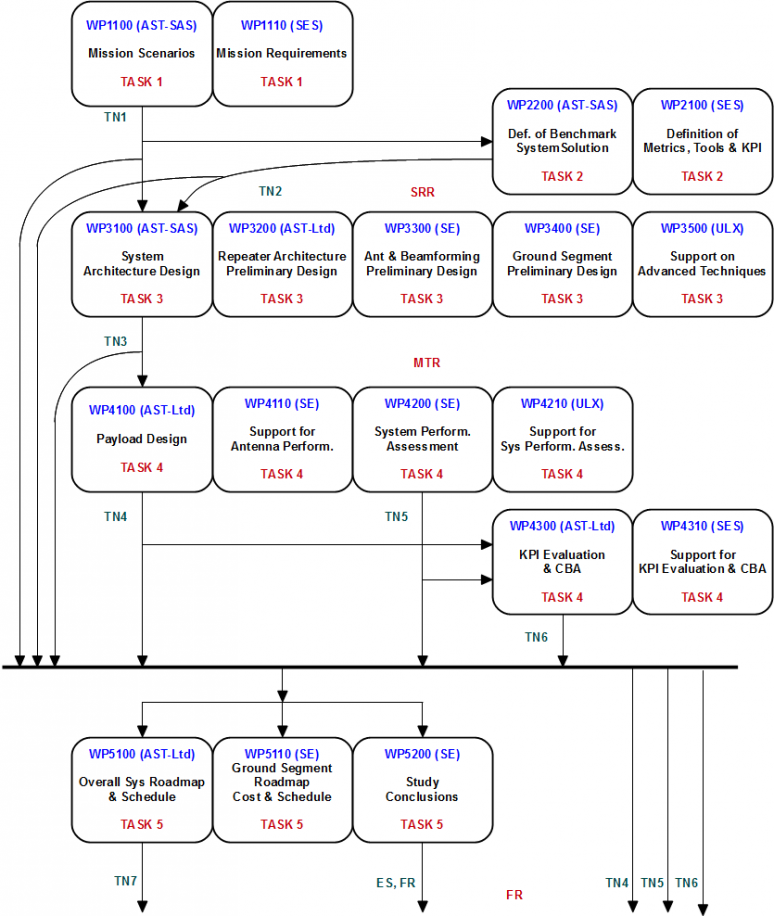-
StatusCompleted
-
Status date2016-09-26
-
Activity Code1B.085
The main objective of this activity was to explore new types of OGBF techniques and architectures which can be useful, over the long term, for a large spectrum of applications.
The study was mainly aimed at pinpointing the technical and economic benefits of OGBF-based solutions and at providing a roadmap for the technology implementation.
The key aspects addressed by the team in this study were:
- the review of the requirements of some realistic satellite reference mission and the evaluation of their performances using conventional technologies;
- The definition of new architectures exploiting OGBF technologies for implementing the selected reference missions;
- The definition and development of a methodology and related tools for evaluating the key performances of the new (OGBF-based) systems as well as that of the reference benchmark employing conventional solutions;
- The assessment of the system performances and technical/economical viability of the proposed solutions using said methodology;
- Elaboration of a development roadmap for the proposed solutions.
Main challenge in the project was to control the increase in complexity and cost of the GW segment. Most OGBF applications are made commercially unviable by the huge complexity increase of such segment. Also maintaining, as far as possible, compatibility with the already deployed user terminal segment is another challenge.
The technologies investigated in the study aims at increasing the system capacity without a corresponding increase of the Total Cost of Ownership (TCO). The main objective is in fact that of reducing the cost per bit per second for the reference missions considered in the study.
Three reference missions (scenarios 1 to 3 in the picture below) are considered in the study to assess the potential benefits of OGBF. The study-selected reference missions aim at providing:
- regional broadband interactive services exploiting the Ka-band spectrum
- high-throughput backhauling services over a continental region. In particular a C-band system for the African continent is considered.
- mobile service in L-band exploiting multi satellite constellations.

The considered system architectures were all based on the transparent (multi-)star network concept. Centralized beamforming at the GW is considered for all the scenarios for both FL and RL. Optional Multi-User detection at the GW side is also considered.
The project work started in September 2014 and was completed in June 2016.
The study logic is shown in the figure below.

Project was completed.






